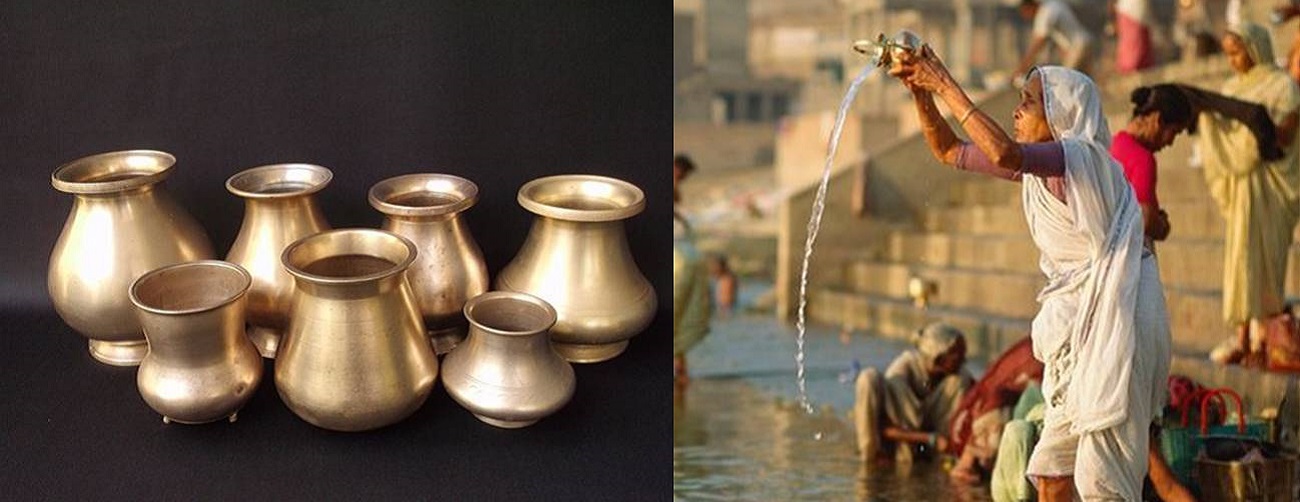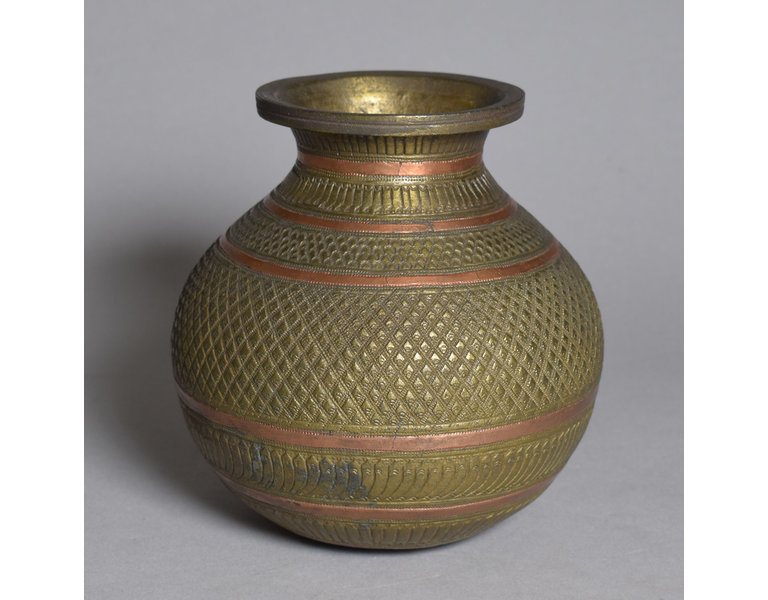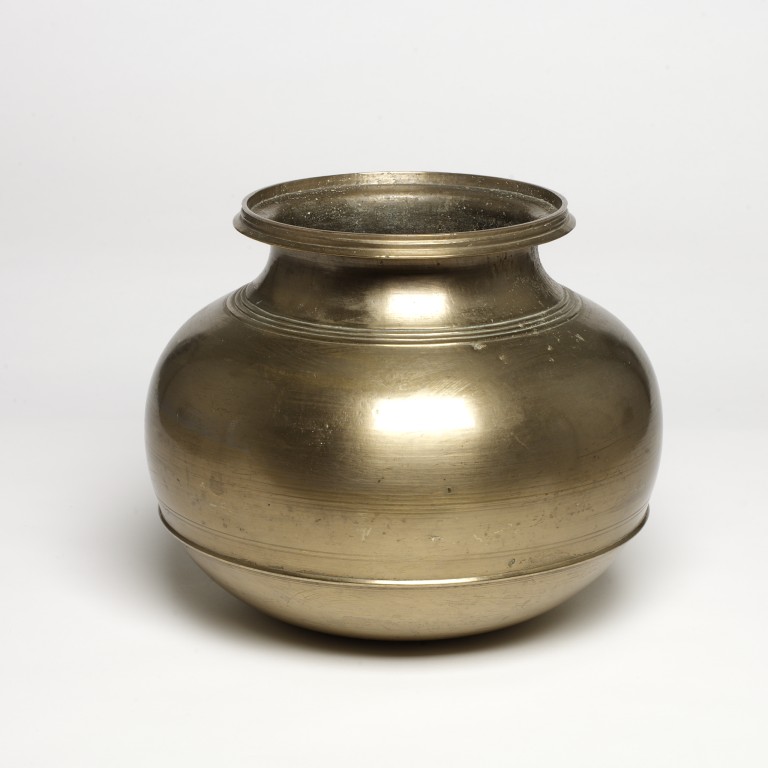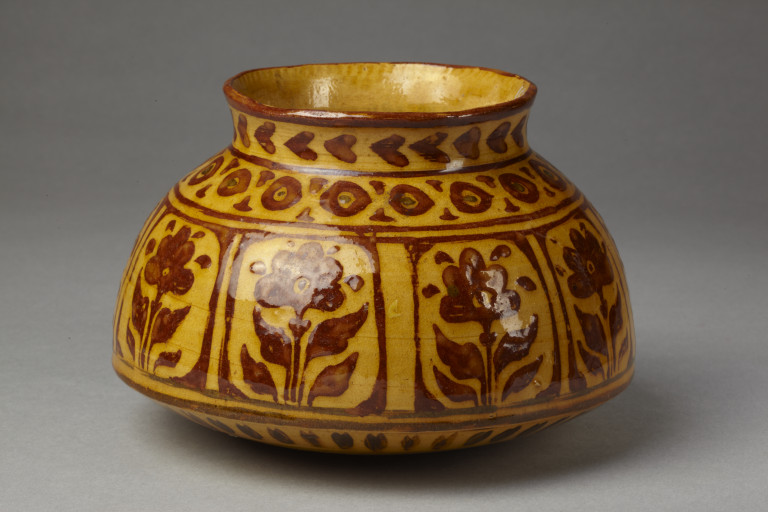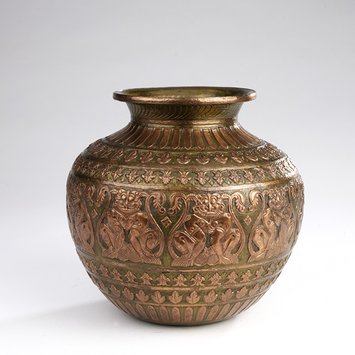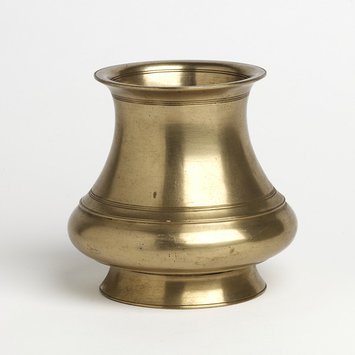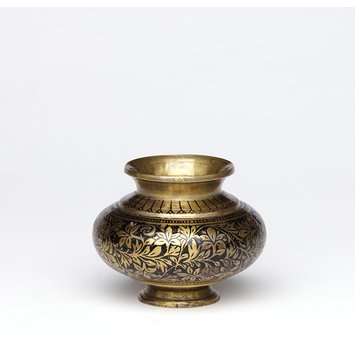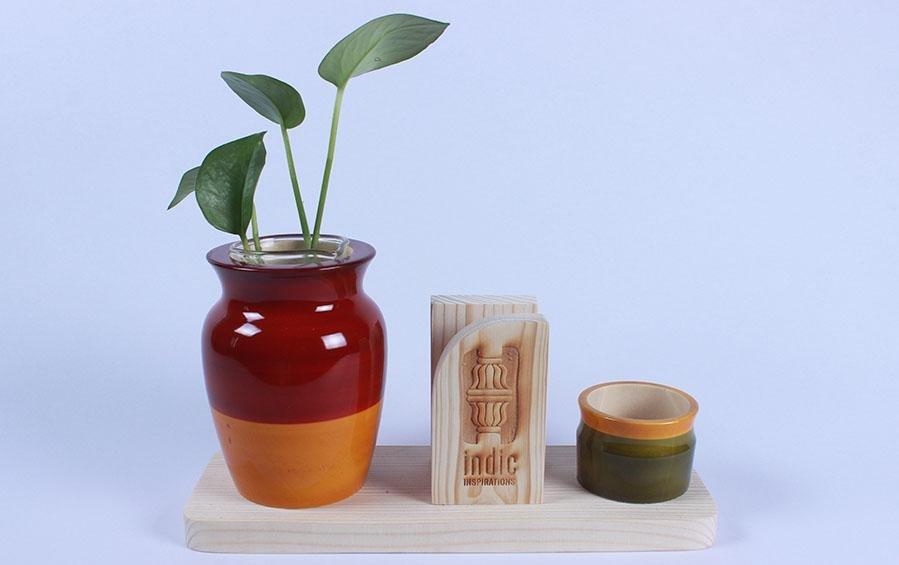Photo on the Left: Charles and Ray Eames; Photo on the Right: The Hare Krishna Movemen
The use of “lota” (a word with no English equivalent) has been epic and is believed to have been in existence since 2300 BCE! A shapely spherical object, its scooped neck makes it easy to hold between fingers and liquids don’t drip when poured. Traditionally made of copper or brass, possessing an orange hue to a bright yellow or a subdued golden patina, the lota dazzles and makes all Indian kitchens glow. A multipurpose metal vessel for all walks of Indian life, it is used for fetching water, performing religious rituals, and even practicing yoga.
It functions as a tumbler, water container, canister, jug, and a stackable container, all in one. Indian consumer fetishism combined with Brahmanical puritanism ensures that individual lotas are used for distinct purposes even if identical; this results in an attractive array of lotas in most homes: a large one for storing water; a smaller one for bathing; or, a miniature lota for the home shrine that stores sacred water from the river Ganges. The lota is an undisputed tribute to its unknown creator.”
Vintage Hand Carved Lota Designs of India Photo: Victoria and Albert Museum, London
Charles Eames, the American Designer who was called upon to help setup India’s National Institute of Design in Ahmedabad in 1958, said of the Lota in his ‘The Indian Report’ – ‘Of all the objects we have seen and admired during our visit to India, the Lota, that simple vessel of everyday use, stands out as perhaps the greatest, the most beautiful. The village women have a process which, with the use of tamarind and ash, each day turns this brass into gold. But how would one go about designing a Lota? First one would have to shut out all preconceived ideas on the subject and then begin to consider factor after factor’.
We have designed a desktop planter inspired by this ageless Lota Design and the quintessential Katori – a smaller variant of the Lota and such a big part of the Indian Thali to hold its varied ingredients. The colours are inspired by Haldi & Kumkum, an essential part of the Colours of India. The glass beaker in the wooden lota, allows water to be used to feed a real, live plant in the pot such as a money plant.
This product is made by artisans of the Channapatna Woodcraft, craft that has existed since the 1700s near Bangalore in Karnataka.
Credit: Pukka Indian: 100 Objects that Define India by Jahnvi Lakhota Nandan


